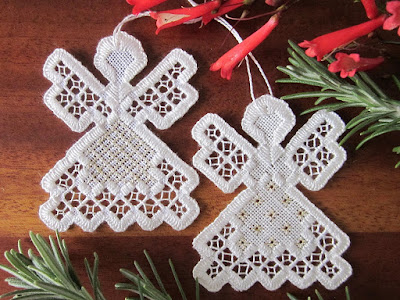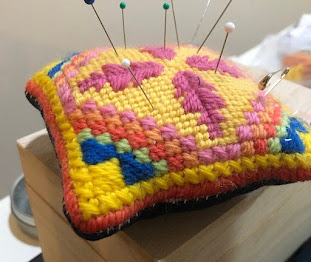I used a few minutes here and there and finished stitching these little Christmas angels, ready for their new owners.
There was a hint in my last post here about what I was stitching. I wonder how many of you recognized the Hardanger angel designed by Rita Tubbs. It's such a sweet little pattern.
On the 28 count (i.e. 28 threads per inch) Zweigart linen I used, I found a number 5 DMC Pearl thread a bit too thick for the buttonhole edge and the Kloster blocks. So I used a Pearl number 8 thread instead. A metallic, gold, Madeira thread gives the skirts a little sparkle. The Dove's eye's are done with DMC Pearl number 12.
When all the stitching was finished, I found my sharp pointed scissors, took a deep breath, and cut, working from the back of the embroidery. That cutting out at the end is always a bit stressful - just in case you snip a thread that shouldn't be cut. But this time all went well.
That's one more thing I can cross off my Christmas to do list. Now I have a few more presents to wrap.
In my next post I'll have an interesting story and an interesting piece of pulled thread work to show you. It was embroidered by my stitching friend Tricia. Until then I will be taking a low-key break over the holidays.
Wishing you well over Christmas and the festive season. May next year be a better one for all of us.


















































